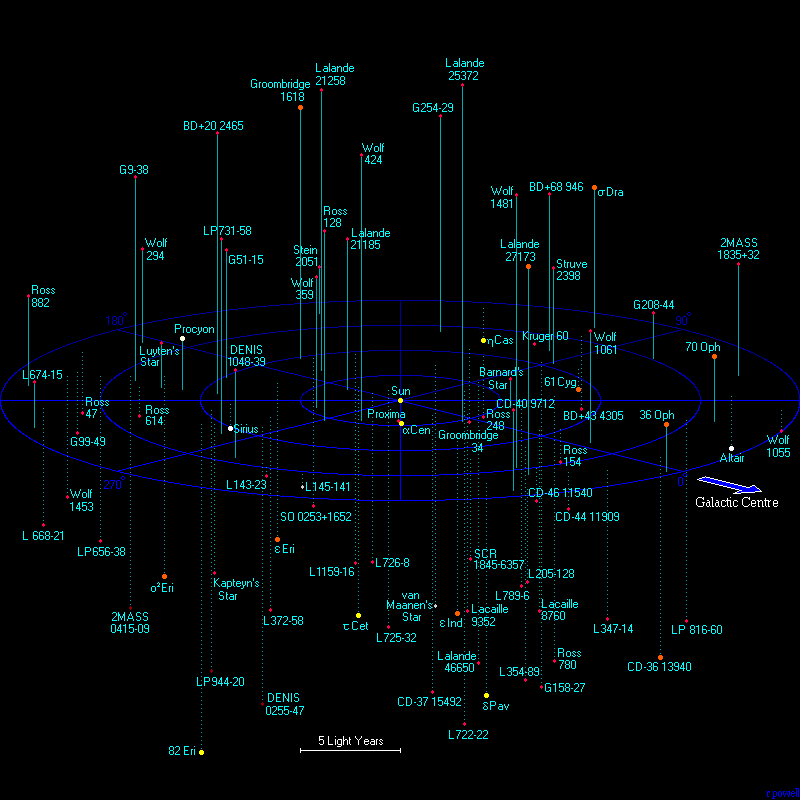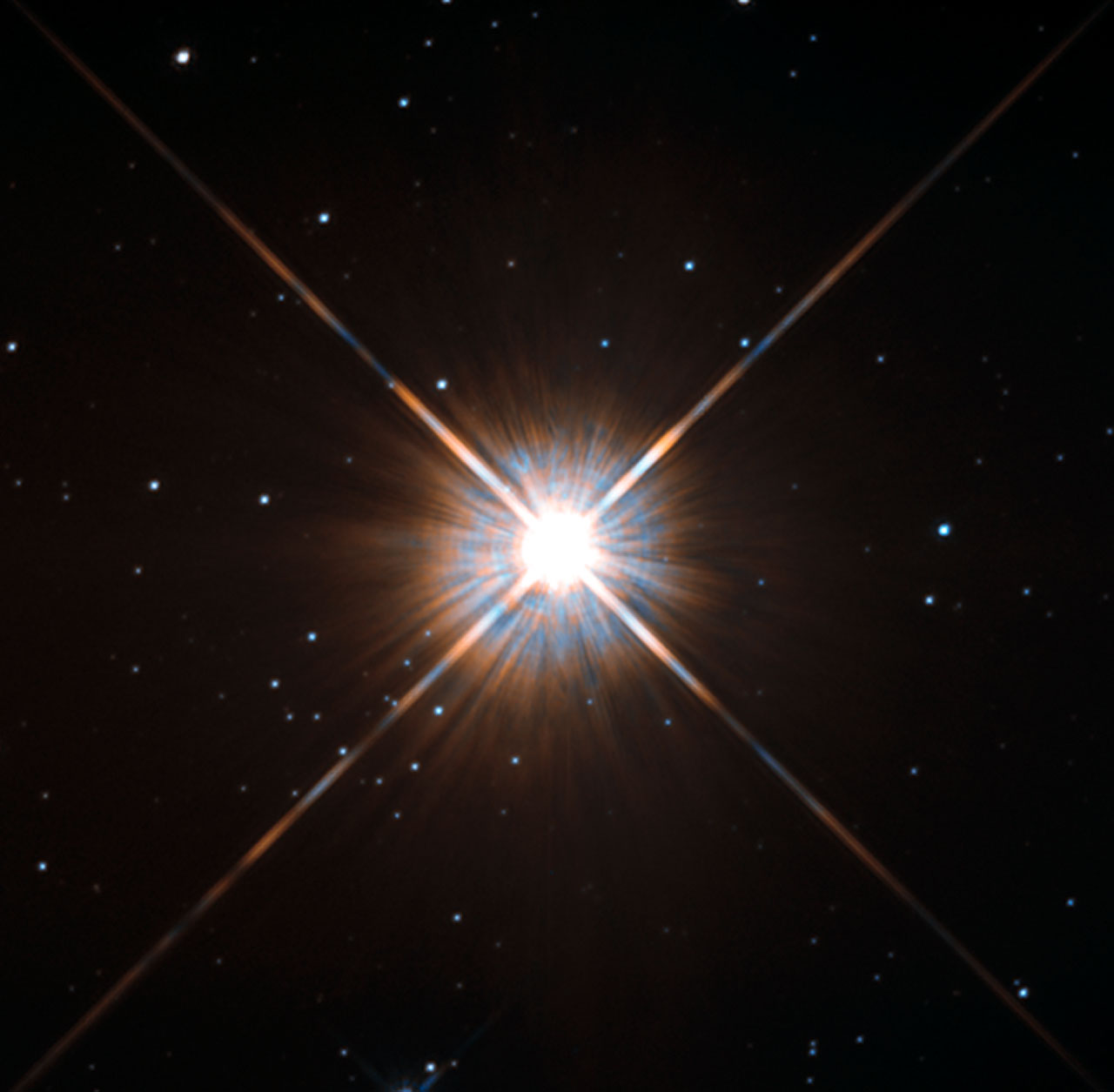- Among the countless stars beyond the sun, some have planets (called exoplanets), and some of the planets have moons (called exomoons).
- With the light years of distance between our Solar System and even the nearest neighboring stars, detection and gathering of information on exoplanets proves challenging, and on moons, even more so. Yet, the possibility intrigues. Could life thrive on, or in, the planets and moons of other solar systems, their own sun (or suns) shining above?
- Our stellar neighbors are abundant in all directions, but they “live” extremely far away; The first image below gives a good sense of this. Specifically, the 3D star atlas shows the 100+ known stars within a 20 light year radius from the Sun. Our nearest neighbors are 4+ light years away, and shown toward the center: Proxima Centauri and the nearby binary star system of Alpha Centauri…which system is suspected to host a planet (which would be the nearest exoplanet). The second image below is a Hubble Space Telescope photo of Proxima Centauri, our nearest stellar neighbor.
- Resources include: https://en.wikipedia.org/wiki/List_of_nearest_stars_and_brown_dwarfs, https://en.wikipedia.org/wiki/Alpha_Centauri, https://en.wikipedia.org/wiki/Proxima_Centauri.


© 2015 Fosdick EDS ☾><(((°>
